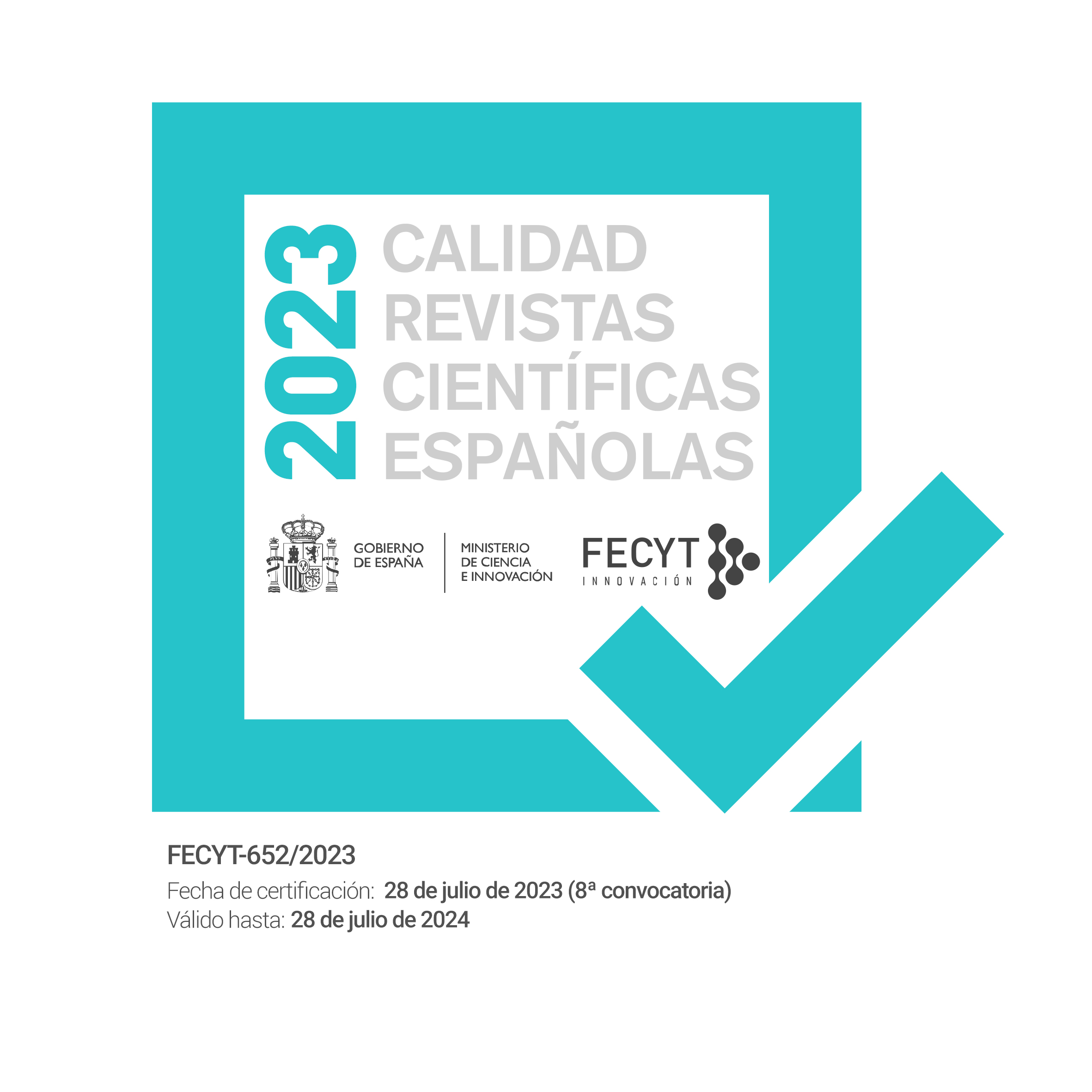The distribution of verbs and verb classes in the English for-dative alternation: A lexico-paradigmatic approach
Resumen
Este artículo explora el papel de los verbos y clases verbales en la alternancia de dativo con for en el contexto del antiguo debate entre enfoques proyeccionistas y construccionistas (o de base sintagmática). Mi principal objetivo ha sido mostrar que un enfoque basado en la alternancia (y más orientado hacia el verbo), donde las «generalizaciones paradigmáticas preceden lógicamente a la interpretación estructural» (Davidse, 1998: 294) y el que también intervienen factores de la estructura de la información, puede ser útil para determinar la distribución de los verbos en la denominada alternancia de Beneficiario, p.ej. Mary carved a toy for the baby/Mary carved the baby a toy (Levin, 1993: 49).La variante de doble objeto puede considerarse una construcción de estructura argumental en sí misma (véanse Goldberg, 1995; Rappaport Hovav y Levin, 1998), si asumimos que la compatibilidad de un determinado verbo con la construcción benefactiva está también determinada por semántica de la clase léxica verbal, como sostiene Croft (2003: 49).
Descargas
Estadísticas globales ℹ️
|
254
Visualizaciones
|
276
Descargas
|
|
530
Total
|
|
Citas
Allerton, D. J. (1978). Generating indirect objects in English. Journal of Linguistics, 14, 21-33.
Boas, H. (2011). A frame-semantic approach to syntactic alternations. In P. Guerrero (Ed.), Morphosyntactic Alternations in English: Functional and Cognitive Perspectives (pp. 207-234). Sheffield and Oakville: Equinox Publishing.
Broccias, C. (2013). [Review of Morphosyntactic Alternations in English. Functional and Cognitive Perspectives]. Review of Cognitive Linguistics, 11(1), 215-226.
Colleman, T. (2010). The benefactive semantic potential of «caused reception’ constructions: A case study of English, German, French and Dutch. In F. Zúniga & S. Kittila (Eds.), Benefactives and Malefactives: Typological Perspectives and Case Studies (pp. 219-243). Amsterdam and Philadelphia: John Benjamins.
Croft, W. (2003). Lexical rules vs. constructions: A false dichotomy. In H. Cuyckens, T. Berg, R. Dirven & K-U Panther (Eds.), Motivation in Language: Studies in Honor of Günter Radden (pp. 49-68). Amsterdam and Philadelphia: John Benjamins.
Davidse, K. (1996a). Ditransitivity and possession. In R. Hasan, C. Cloran & D.G. Butt (Eds.), Functional Descriptions. Theory in Practice (pp. 85-144). Amsterdam and Philadelphia: John Benjamins.
Davidse, K. (1996b). Functional dimensions of the dative in English. In W. van Belle & W. van Lanfendonck (Eds.), The Dative, vol 1. Descriptive Studies (pp. 289-338). Amsterdam and Philadelphia: John Benjamins.
Davidse, K. (1998). Agnates, verb classes and the meaning of construals: The case of ditransitivity in English. Leuvense Bijdragen, 87, 281-313.
Davidse, K. (2011). Alternations as a heuristic to verb meaning and the semantics of constructions. In P. Guerrero (Ed.), Morphosyntactic Alternations in English: Functional and Cognitive Perspectives (pp. 11-37). Sheffield and Oakville: Equinox Publishing.
Davies, M. (2008-) The Corpus of Contemporary American English: 425 million words, 1990-present. Available online at http:// corpus.byu.edu/coca/
Gleason, H. A. (1966). Linguistics and English Grammar. New York: Holt, Reinhart and Winston.
Goldberg, A. (1992). The inherent semantics of argument structure: The case of the English ditransitive construction. Cognitive Linguistics, 3(1), 37-74.
Goldberg, A. (1995). Constructions: A Construction Grammar Approach to Argument Structure. Chicago, IL: University of Chicago Press.
Goldberg, A. (2002) Surface generalizations: An alternative to alternations. Cognitive Linguistics, 13(4), 327-356. doi 10.1515/cgl.2002.022
Goldberg, A. (2006). Constructions at Work: The Nature of Generalization in Language. Oxford: Oxford University Press.
Goldberg, A. (2013). Constructionist approaches. In T. Hoffmann & G. Trousdale (Eds.), The Oxford Handbook of Construction Grammar (pp. 15-31). Oxford: Oxford University Press.
Groefsema, M. (2001). The real-world colour of the dative alternation. Language Sciences, 23, 525-550.
Green, G. (1974). Semantics and Syntactic Regularity. Bloomington: Indiana University Press.
Gropen, J., Pinker, S., Hollander, M., Goldberg, R. & Wilson, R. (1989). The learnability and acquisition of the dative alternation in English. Language, 65, 203-257.
Guerrero Medina, P. (forthcoming, 2020). Meaning construction and motivation in the English benefactive double object construction: Verbal and constructional semantics at work. Review of Cognitive Linguistics, 18(1), 94-120.
Halliday, M. A. K. (1967). Notes on transitivity and theme in English 1. Journal of Linguistics, 3(1), 37-81.
Haspelmath, M. (2015). Ditransitive Constructions. Annual Review of Linguistics, 1, 19-41. doi: 10.1146/annurev-linguist-030514-125204
Lakoff, G. & Johnson, M. (1980). Metaphors We Live By. Chicago: IL: The University of Chicago Press.
Lemmens, M. (2006). More on objectless transitives and ergativization patterns in English. Constructions SV1-6/2006. Retrieved from http://www.constructions-online.de, urn:nbn:de:009-4-6802.
Levin, B. (1993). English Verb Classes and Alternations: A Preliminary Investigation. Chicago, IL: The University of Chicago Press.
Levin, B. & Rappaport Hovav, M. (2005). Argument Realization. Cambridge: Cambridge University Press.
Pinker, S. (1989). Learnability and Cognition: The Acquisition of Argument Structure. Cambridge, Mass.: The MIT Press.
Rappaport Hovav, M. & Levin, B. (1998). Building verb meanings. In M. Butt & W. Geuder (Eds.), The Projection of Arguments: Lexical and Compositional Factors (pp. 97-134). Stanford: CSLI Publications.
Shibatani, M. (1996). Applicatives and benefactives: A cognitive account. In M. Shibatani & S. A. Thompson (Eds.), Grammatical constructions: Their form and meaning (pp. 157-195). Oxford: Oxford University Press.
Van den Eynde, K. (1995). Methodological reflections on descriptive linguistics: Knud Togeby’s principles and the pronominal approach. In L. Schøsler & M. Talbot (Eds.), Studies in Valency (pp. 111-131). Odense: Odense University Press.
Descargas
Publicado
Cómo citar
Número
Sección
Licencia
Reconocimiento – No comercial (CC BY-NC). Bajo esta licencia el usuario puede copiar, distribuir y exhibir públicamente la obra y puede crear obras derivadas siempre y cuando estas nuevas creaciones reconozcan la autoría de la obra original y no sean utilizadas de manera comercial.
Los autores retienen todos sus derechos de publicación y copyright sin restricciones.









